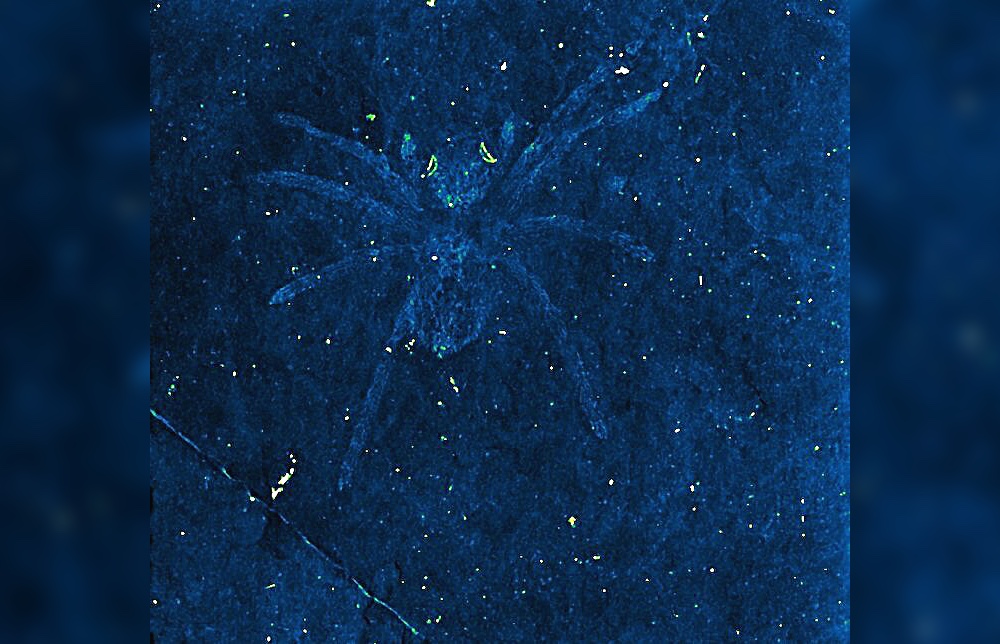These Ancient Spider Fossils Still Have Silvery, Shimmering Eyes

Paleontologists working in South Korea found ancient spider fossils with still-glittering eyes.
Spider fossils are rare, the researchers wrote in a paper published online Jan. 28 in the Journal of Systematic Paleontology. Their bodies are so soft that they typically decay entirely soon after death, leaving no trace unless they happen to end up trapped in amber. But 11 spiders from the Cretaceous period have turned up preserved in shale on the Korean Peninsula. And two of the fossils included the still-shiny traces of sparkling eyes.
Those glittering bits are mirror structures in the eyes called tapetums that bounce light from the back of the eye back through the retina. Animals use them to improve their night vision, usually at the expense of some overall blurriness. [See 15 Stunning Animal Eyes — Rectangular Pupils to Wild Colors]
"ln spiders, the ones you see with really big eyes are jumping spiders, but their eyes are regular eyes — whereas wolf spiders at nighttime, you see their eyes reflected in light like cats," study co-author Paul Selden, director of the Paleontological Institute at The University of Kansas Biodiversity Institute and Natural History Museum, said in a statement. "So, night-hunting predators tend to use this different kind of eye. This was the first time a tapetum had been in found in fossil."
Selden said the canoe-like shape of the 110- to 113-million-year-old tapetums will help researchers place the rare spider fossils on the evolutionary tree.
This particular bit of South Korean rock has turned out to be a godsend for paleontologists.
"This is so rare because [spiders] are very soft — they don't have hard shells so they very easily decay," Selden said. "It has to be a very special situation where they were washed into a body of water. Normally, they'd float. But here, they sunk, and that kept them away from decaying bacteria — it may have been a low-oxygen condition [where bacteria that cause decay can't survive]."
Sign up for the Live Science daily newsletter now
Get the world’s most fascinating discoveries delivered straight to your inbox.
He added that the rocks where the spider fossils were found were also covered with the remains of little crustaceans and fish, suggesting that, perhaps, an algal bloom trapped them in a mucus mat, causing them to sink. "But that's conjecture," Selden said. "We don't really know what caused this, but something killed off a lot of animals around the lake at one time or on an annual basis."
Whatever killed them, it did paleontologists of the future a great favor. And left some tiny, shimmering structures intact to survive through the eons.
- Goliath Birdeater: Images of a Colossal Spider
- Image Gallery: 25 Amazing Ancient Beasts
- The 10 Weirdest Sea Monsters
Originally published on Live Science.










